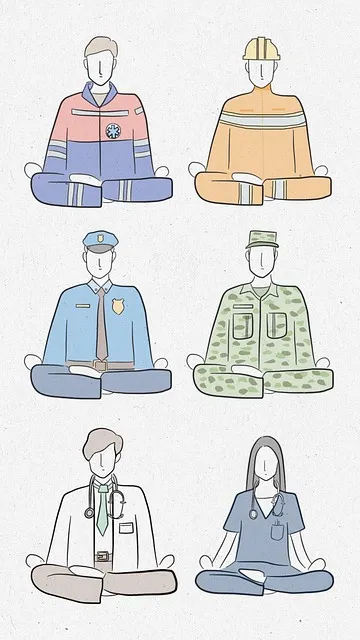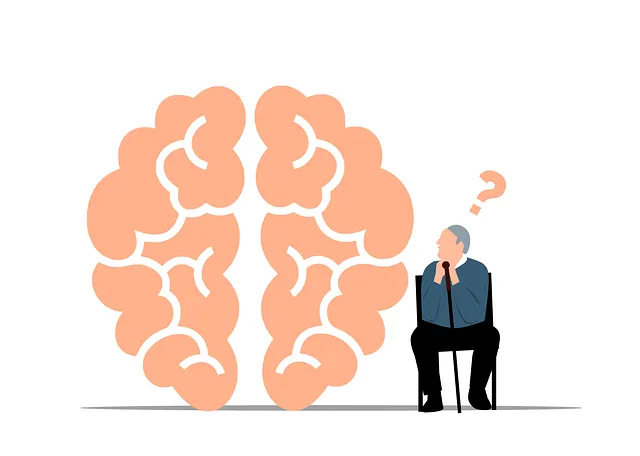Mental wellness programs in community settings, such as those offered by Kaiser in Greenwood Village, significantly enhance emotional well-being and promote positive thinking among residents. These initiatives provide accessible resources and supportive environments for open discussions about mental health, offering a range of services from individual therapy to group support meetings. Evaluating these programs involves a multi-faceted approach that includes both quantitative (surveys, tracking outcomes) and qualitative methods (interviews, focus groups), ensuring services remain effective and tailored to the evolving needs of Greenwood Village residents. Kaiser's comprehensive assessment method helps assess long-term benefits, integrating innovative tools for future monitoring to adapt services accordingly.
Greenwood Village residents seeking mental wellness support often turn to community programs, including those offered by Kaiser. Evaluating these services is crucial to ensure their effectiveness and adaptability to local needs. This article explores various methods to assess mental wellness program impact, comparing qualitative and quantitative approaches. We analyze Kaiser’s mental health services in the region, discuss best practices, and provide insights into future directions for comprehensive evaluation, helping Greenwood Village residents make informed choices regarding their mental wellness journey.
- Understanding Mental Wellness Programs in Community Settings
- Evaluating the Effectiveness of Kaiser's Mental Health Services
- Methodologies for Assessing Program Impact on Individual Well-being
- Qualitative vs Quantitative Approaches: A Balanced Perspective
- Best Practices and Future Directions for Comprehensive Evaluation
Understanding Mental Wellness Programs in Community Settings

Mental wellness programs in community settings play a vital role in promoting emotional well-being and positive thinking among residents. These initiatives, often facilitated by organizations like Kaiser in Greenwood Village, aim to create supportive environments that encourage open discussions about mental health and provide accessible resources for those seeking help. The focus is not just on treating mental illness but also on fostering emotional healing processes through various community engagement strategies.
Greenwood Village’s Kaiser, for instance, offers a range of services that cater to diverse needs, from individual therapy sessions to group support meetings. By integrating these programs into the fabric of the community, residents are empowered to take charge of their mental health and learn effective coping mechanisms. This holistic approach recognizes that emotional well-being is influenced by various social, environmental, and personal factors, necessitating tailored interventions for optimal results.
Evaluating the Effectiveness of Kaiser's Mental Health Services

Greenwood Village residents have access to Kaiser’s comprehensive mental health services, designed to cater to diverse needs using evidence-based practices. The evaluation of these services involves a multi-faceted approach, reflecting Mind Over Matter principles. This includes measuring client satisfaction, tracking treatment outcomes, and assessing the impact on day-to-day functioning. Public Awareness Campaigns Development plays a crucial role in gauging community engagement and understanding perceptions surrounding mental health.
Through regular surveys and feedback sessions, Kaiser can identify areas for improvement and tailor interventions accordingly. Additionally, Social Skills Training is incorporated into the evaluation process to enhance coping mechanisms and promote better interpersonal interactions. By combining quantitative data with qualitative insights, Kaiser ensures its mental health services remain effective, accessible, and aligned with the evolving needs of Greenwood Village residents.
Methodologies for Assessing Program Impact on Individual Well-being

Evaluating the impact of mental wellness programs is a multifaceted process that goes beyond simple satisfaction surveys. At Greenwood Village, for instance, where Kaiser offers comprehensive mental health services, various methodologies are employed to assess program effectiveness. One key approach involves tracking individual well-being metrics over time, such as stress levels, mood stability, and overall life satisfaction. This longitudinal assessment provides valuable insights into the long-term benefits of the program.
Additionally, qualitative methods like interviews and focus groups offer deeper understanding by capturing participants’ personal narratives and experiences. The Crisis Intervention Guidance and Mind Over Matter Principles often embedded in these programs can be assessed through participants’ reports on coping strategies and positive thinking skills acquired. By combining quantitative data with rich qualitative insights, mental wellness program evaluations become more nuanced and comprehensive, ensuring services align with the evolving needs of individuals seeking support at Kaiser or similar healthcare facilities.
Qualitative vs Quantitative Approaches: A Balanced Perspective

When evaluating mental wellness programs, researchers and professionals often grapple with choosing between qualitative and quantitative approaches, each offering unique insights into program effectiveness. Qualitative methods, such as in-depth interviews and focus groups, provide rich, contextual data by delving into participants’ lived experiences and perceptions of the program. This approach is particularly valuable for understanding complex social phenomena and fostering empathy building strategies within mental health services, like those offered at Greenwood Village.
Quantitative techniques, on the other hand, rely on statistical analysis of numerical data collected through surveys or experimental designs. These methods are useful for identifying trends, measuring program impact across a large scale, and supporting risk assessment and management planning for mental health professionals. For instance, quantitative evaluations can help determine whether specific interventions lead to improved outcomes for participants, enabling programs to adapt and enhance their services accordingly. Balancing both qualitative and quantitative perspectives allows for a comprehensive understanding of mental wellness program effectiveness, catering to diverse evaluation needs from the perspective of both service users and providers alike.
Best Practices and Future Directions for Comprehensive Evaluation

When evaluating mental wellness programs, such as those offered by Kaiser in Greenwood Village, best practices emphasize a multi-faceted approach that goes beyond mere satisfaction surveys. A comprehensive evaluation should include quantitative and qualitative methods to capture the full spectrum of program impact. This includes measuring improvements in symptoms related to anxiety relief and assessing changes in resilience building over time. Qualitative data from participant feedback and interviews can provide rich insights into individual experiences, allowing for a deeper understanding of both positive outcomes and areas needing improvement.
Looking ahead, future directions in mental health education programs design should integrate innovative evaluation techniques, such as digital tracking tools and longitudinal studies, to monitor long-term effects on mental wellness. By combining these methods, Kaiser and other healthcare providers can continuously refine their services, ensuring they meet the evolving needs of participants and effectively contribute to anxiety relief and enhanced resilience building within Greenwood Village and beyond.
Evaluating mental wellness programs is essential, especially in community settings like Greenwood Village, where access to services such as those offered by Kaiser can significantly impact individual well-being. By combining qualitative and quantitative methodologies, we gain a comprehensive understanding of program effectiveness. This balanced approach allows for the identification of best practices and future directions, ensuring that mental health services, including those at Kaiser, continue to enhance and support community members’ mental wellness in Greenwood Village and beyond.






